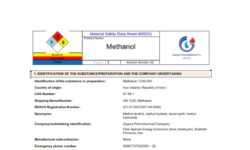What You Need to Know About RSDI Benefits
For many individuals and families in the United States, RSDI Benefits serve as an essential source of financial support. RSDI stands for Retirement, Survivors, and Disability Insurance, a program managed by the Social Security Administration (SSA). It is designed to provide financial protection to those who have retired, are disabled, or are survivors of a deceased worker. These benefits are funded by payroll taxes and are available to individuals who have contributed to the Social Security system throughout their working lives.
To qualify for RSDI Benefits, you need to have earned a certain number of work credits, which are calculated based on your income and the taxes paid into Social Security. The program includes three types of benefits:
- Retirement Benefits: Available to individuals who have reached a specific age and have stopped working.
- Survivor Benefits: Paid to the family members of a deceased worker.
- Disability Benefits: For individuals who are unable to work due to a medical condition that meets the SSA’s definition of disability.
The Importance of the RSDI Income Limit
One important aspect of RSDI Benefits is the RSDI Income Limit, which refers to how much money you can earn while still being eligible for benefits. This limit is especially relevant for retirees and disabled individuals receiving Social Security Disability Insurance (SSDI).
For retirees, the RSDI Income Limit applies to individuals who choose to continue working while receiving Social Security benefits before reaching full retirement age. If your income exceeds the limit set by the SSA, your benefits may be reduced. However, once you reach full retirement age, there is no income limit, and you can earn as much as you want without any reduction in your Social Security benefits.
For individuals receiving disability benefits, the RSDI Income Limit is stricter. The SSA uses a threshold known as Substantial Gainful Activity (SGA) to determine if you are still eligible for disability benefits. If your income exceeds the SGA amount, you may lose your eligibility for disability payments. However, the SSA offers work incentives and trial work periods that allow disabled individuals to test their ability to work without immediately losing their benefits.
Comparing RSDI vs. SSDI: What’s the Difference?
It’s common for people to wonder about the difference between RSDI vs. SSDI. While both programs are administered by the Social Security Administration and provide vital financial assistance, they serve slightly different purposes.
SSDI stands for Social Security Disability Insurance, which is actually a part of the broader RSDI program. SSDI specifically provides disability benefits to individuals who have worked and paid Social Security taxes but can no longer work due to a severe disability. Eligibility for SSDI is based on work history and how many Social Security credits you’ve earned through your employment. The SSA determines whether your disability qualifies for SSDI based on their strict medical criteria.
In contrast, RSDI is a broader program that includes not only SSDI but also retirement and survivors benefits. In other words, while SSDI specifically provides benefits for disabled workers, RSDI covers a wider range of life events, including retirement and the loss of a family member. When comparing RSDI vs. SSDI, it’s helpful to remember that SSDI is part of RSDI, and the main difference is that SSDI is disability-specific, whereas RSDI encompasses disability, retirement, and survivors benefits.
Why Understanding the System Matters
Understanding the differences between RSDI vs. SSDI and being aware of the RSDI Income Limit is crucial for anyone navigating Social Security benefits. For retirees, staying within the income limit before full retirement age can help prevent a reduction in benefits. For disabled individuals, being aware of the work incentives and income thresholds can allow you to explore employment options without risking your benefits immediately.
Knowing how RSDI Benefits work ensures that you and your family receive the support you’re entitled to while making informed decisions about work and income. Each component of the RSDI program has its own rules and eligibility criteria, so it’s important to stay updated on the latest changes from the SSA.
Maximizing Your RSDI Benefits
Whether you are applying for RSDI Benefits for retirement, survivors, or disability, understanding the system and the RSDI Income Limit can help you maximize the financial support available to you. Regularly reviewing your earnings, checking the SSA website for updates, and consulting with a Social Security representative or advisor can help ensure that you’re receiving the benefits you qualify for.
For individuals with disabilities, exploring work options under the SSA’s trial work period program can provide you with a pathway back to employment without the immediate loss of your benefits. For retirees, balancing work and Social Security income under the earnings limit can help you boost your overall financial health until you reach full retirement age.
Navigating Social Security can be complex, but with a solid understanding of RSDI Benefits, the RSDI Income Limit, and the differences between RSDI vs. SSDI, you can make more informed decisions about your financial future. Whether you’re planning for retirement, dealing with a disability, or managing survivor benefits, staying educated about these programs will help you get the most out of your benefits.


